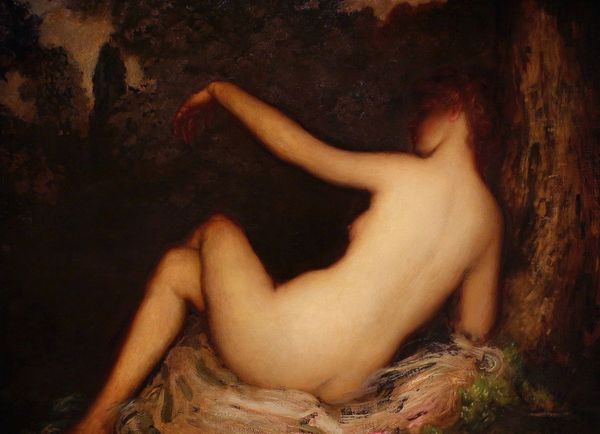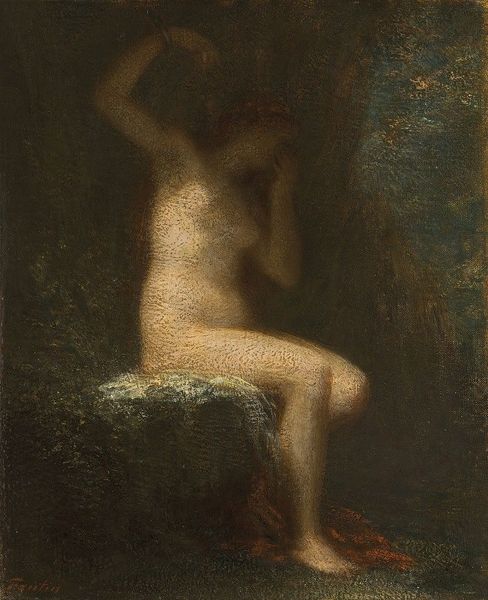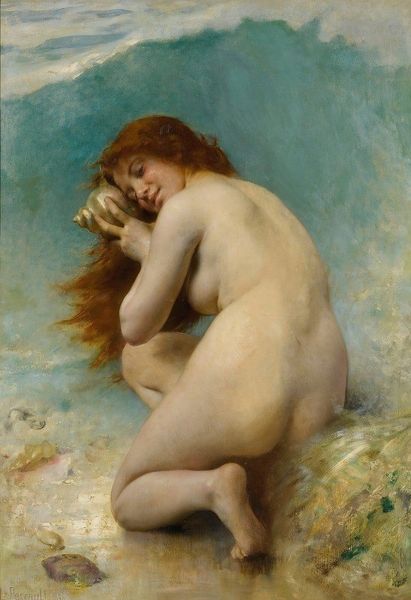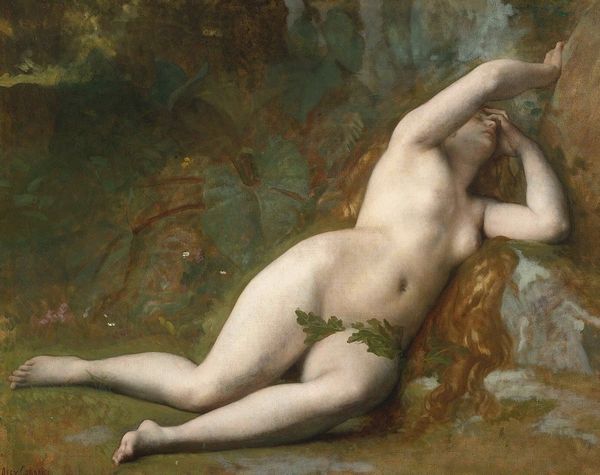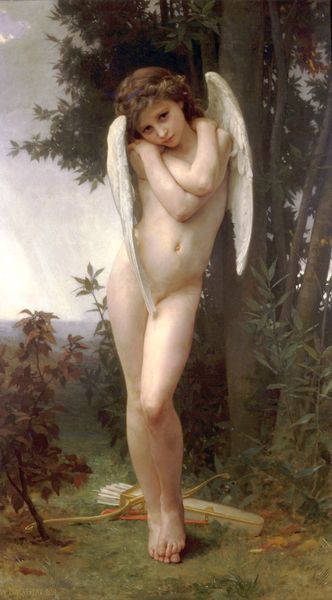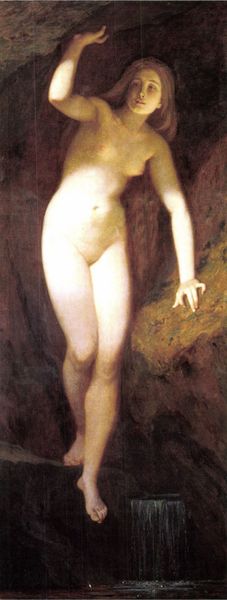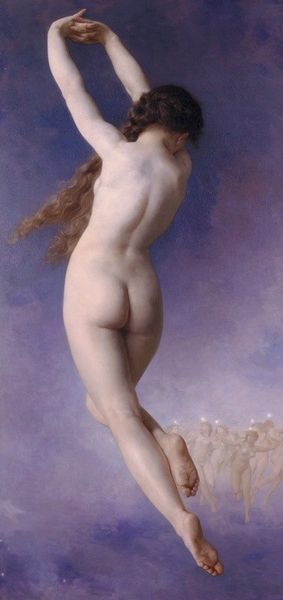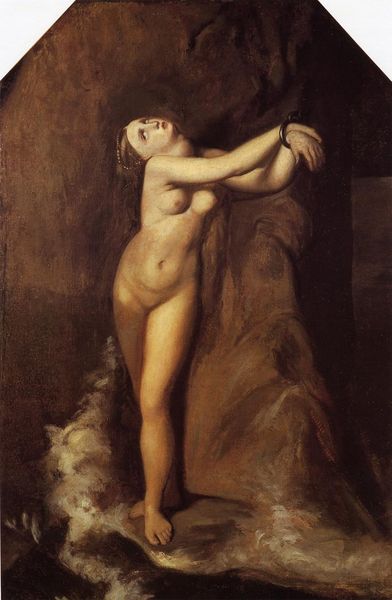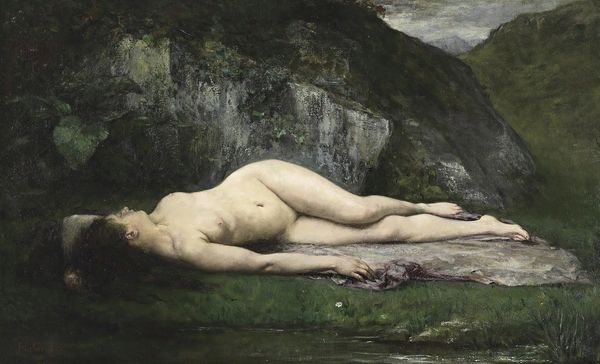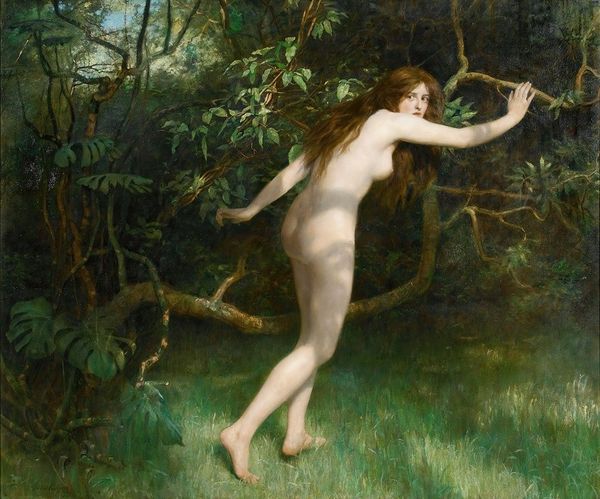
Dimensions: 116 x 90 cm
Copyright: Public domain
Editor: Here we have Camille Corot's "Venus Bathing" from 1874, rendered in oil. It's a scene bathed in soft, warm tones, and Venus herself seems lost in thought. What do you see in this piece? Curator: This painting speaks volumes about the complex relationship between art, mythology, and the male gaze in the 19th century. Corot presents Venus, a mythological figure deeply embedded in classical art tradition, in a rather intimate and vulnerable pose. We must consider the social context. Was it truly meant to celebrate female beauty or, moreproblematicially, to satisfy societal expectations and male viewers? Editor: So, it's not just a pretty picture, it's engaging with a larger power dynamic? Curator: Precisely. The painting's location— a private collection – is crucial. Who were the consumers of such images and what power did it give them? Furthermore, think about the title, "Venus Bathing," rather than something like "A Nymph Bathing." The explicit mythological connection elevated the image, allowing for the display of nudity in a society with strict moral codes. Editor: That's fascinating, it sort of uses mythology as a shield. Is the romanticism style serving the same function? Curator: Exactly! Romanticism, with its emphasis on emotion and nature, is employed strategically. It softens the potentially harsh realities of representing the female body as an object of desire. Nature and mythology acted as conduits for social dialogue about sexuality and control. Editor: This has completely reshaped my understanding; it's so much more than a serene landscape with a nude figure. Curator: Indeed. Examining the layers of history and social forces at play deepens our appreciation of art.
Comments
No comments
Be the first to comment and join the conversation on the ultimate creative platform.
